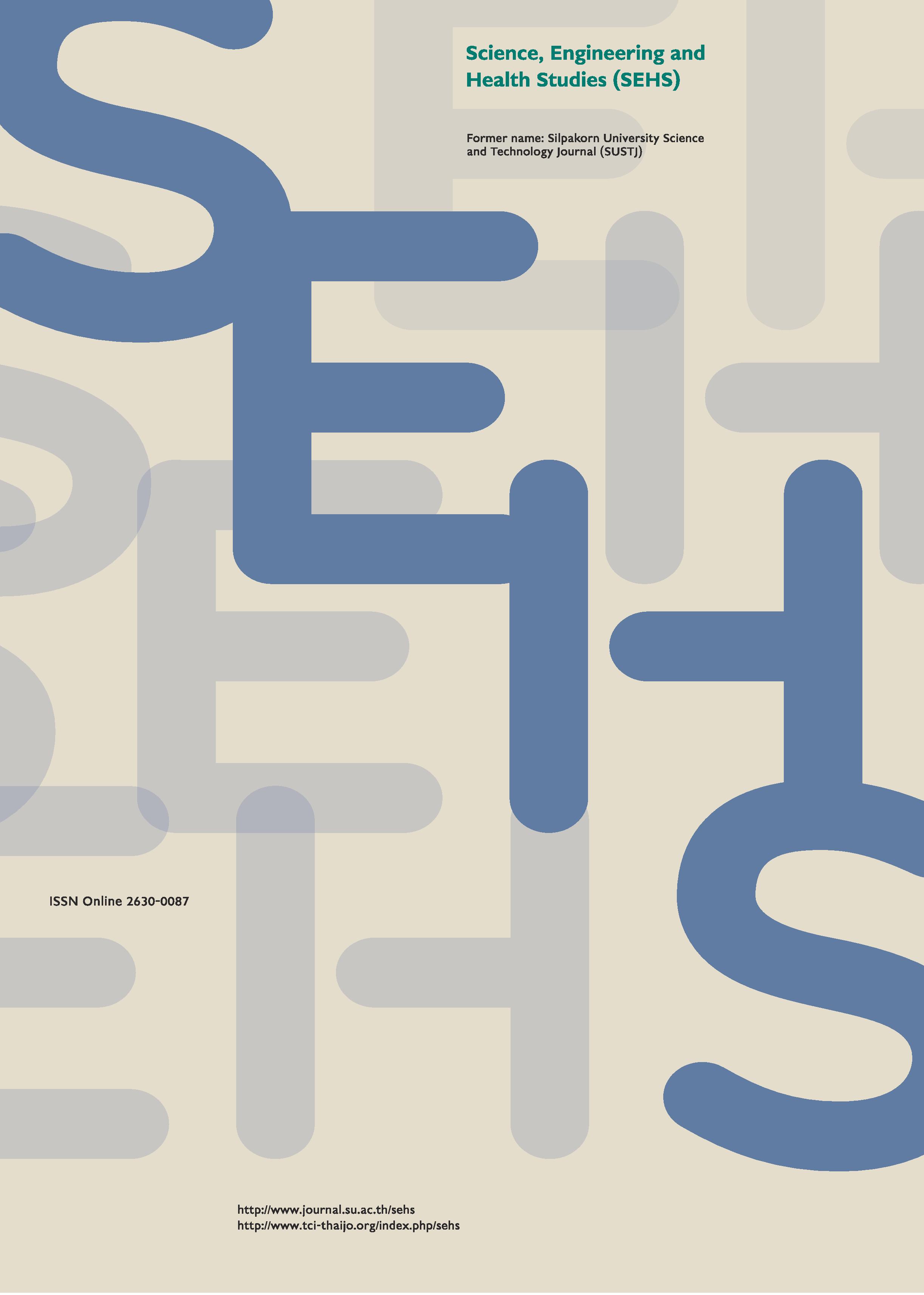Quality improvement of printed circuit board: A case study of copper in hole
Main Article Content
Abstract
The objective of this research is to reduce defective from copper in drilled hole of printed circuit board by adjusting 1) operating speed and retake rate of drill bit in CNC drilling step, 2) vacuum pressure for copper dust of dust collector in CNC drilling machine, 3) pressure and duration in cleaning step with high pressure ultrasonic and 4) life time of drill bit through uses of quality control circle methodology and simple quality improvement tools. Having adjusted this set of factors as a whole, defective from copper in hole was reduced significantly from 12.81% to 0.66% resulting in higher production capacity from lower defective. For future research, it is suggested to study the impact of individual factor and its most suitable value on copper in hole problem with more sophisticated quality improvement and statistical tools.
Downloads
Article Details
References
Bushell, S. (1992). Implementing plan, do, check and act. The Journal for Quality and Participation, 15(5), 58-62.
Canel, C., and Kadipasaoglu, S. (2002). Quality control circles in the Veterans Administration hospital. International Journal of Health Care Quality Assurance, 15(6), 238-248.
(EEI) Electrical and Electronics Institute. (2016). About EEI. [Online URL:www.thaieei.com/2013/en/about01.php.] accessed on July 12, 2016.
Gitlow, H. S., Oppenheim, A. J., Opeenheim, R., and Levine, D. M. (2005). Quality Management, 3rd ed., McGraw-Hill, Singapore.
Gryna, F. M., Chua, R. C. H., and DeFeo, J. A. (2007). Juran’s Quality Planning and Analysis: For Enterprise Quality, 5th ed., McGraw-Hill, Singapore.
Hosotani, K. (1992). Japanese Quality Concept: An Overview, Quality Resources, New York.
Huang, L. (2015). Investigation of chip formation and burr control in PCB fixture hole. Circuit World, 41(2), 61-69.
Ishikawa, K. (1976). Guide to Quality Control. Asian Productivity Organization, Tokyo.
Jacobs, F. R., and Chase, R. B. (2011). Operations and Supply Chain Management, Global ed., McGraw-Hill, China.
Olberding, R. (1998). Toyota on competition and quality circles. The Journal of Quality and Participation, 21(2), 52.
Piczak, W. (1988). Quality circles come home. Quality Progress, 21(12), 37-39.
Salaheldin, S. I., and Zain, M. (2007). How quality-control circles enhance work safety: a case study. The TQM Magazine, 19(3), 229-44.
Shi, H., Song, F., and Fu, L. (2011). Experimental study on drilling force in printed circuit board micro drilling process. Circuit World, 37(1), 24-29.
Tennant, C., Warwood, S. J., and Chiang, M. M. P. (2002). A continuous improvement process at Seven Trent Water. The TQM Magazine, 14(5), 248-92.
Trehan, M., and Kapoor, V. (2011). TQM journey of an Indian milk-producing cooperative. The TQM Journal, 23(4), 423-434.
Vanichcinchai A. (2013). Raw material yield improvement with employee involvement and simple productivity tools. Chulalongkorn Business Review, 35(137), 70-85. [in Thai]
Workman, D. (2016). Highest value Thai export products. [Online URL:www.worldstopexports.com/highest-value-thai-export-products/] accessed on July 16, 2016.
Zheng, X., Dong, D., Huang, L., Wang, X., and Chen, M. (2013a). Investigation of tool wear mechanism and tool geometry optimization in drilling of PCB fixture hole. Circuit World, 39(4), 195-203.
Zheng, X, Liu, Z., An, Q., Wang, X., Xu, Z., and Chen, M. (2013b). Experimental investigation of microdrilling of printed circuit board. Circuit World, 39 (2), 82-94.


